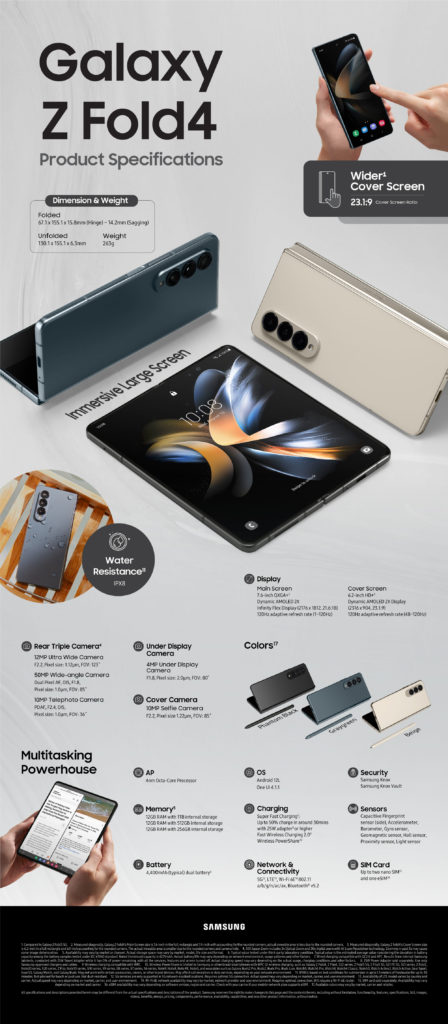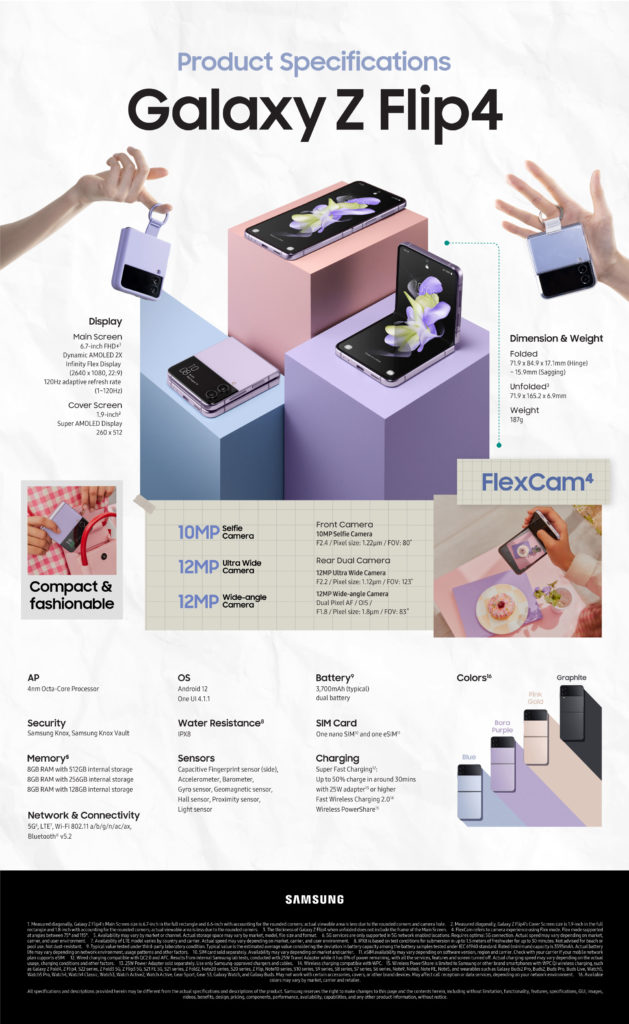Samsung Electronics Co., Ltd. announces today that it has made progress towards achieving the 2025 sustainability goals for the MX (Mobile eXperience) Business. Key initiatives include developing and incorporating recycled materials into products, designing more eco- conscious packaging and giving new life to older Samsung Galaxy devices to reduce e-waste.
Since announcing the Galaxy for the Planet vision at Unpacked in August 2021, Samsung has worked diligently to create new ways to recycle and repurpose resources that would otherwise become harmful waste, minimize its environmental footprint and inspire innovation that helps preserve the planet. Today, Samsung is sharing the progress so far on its sustainability journey.
“Samsung is taking consistent and impactful actions that help protect people and the planet. We marry sustainability and innovation in everything we do,” said TM Roh, President and Head of Mobile eXperience Business at Samsung Electronics. “I am proud of our progress to date. At the same time, it’s been a humbling experience that enables us to continue on our journey towards achieving our sustainability vision with even more conviction and rigor than before.”
Expanding the Use of Recycled Materials to the Galaxy Z Fold4 and Galaxy Z Flip4
Developing new, recycled materials is a key focus area for Galaxy for the Planet. The more Samsung recycles, the more resources it preserves. While repurposing materials into Galaxy devices presents many challenges, the benefits for the planet make it well worth the effort.


Samsung designed the new Galaxy Z series and Galaxy Buds2 Pro with repurposed fishing nets, or ghost nets, that could otherwise end up in the ocean.
First integrated into the Galaxy S22 series in February 2022, today there are eleven Galaxy devices that use repurposed fishing nets including Galaxy Book2 Pro series and Galaxy Tab S8 series as well. By repurposing abandoned fishing nets into a high-performance material for Galaxy technology, Samsung helps to minimize the effects of plastic pollution – 640,000 tons of fishing nets are abandoned and pollute the world’s oceans every year.
Repurposing discarded fishing nets is only one example of Samsung’s advancements in increasing its use of recycled materials in its products.
Samsung has incorporated eco-conscious materials including repurposed fishing nets, post-consumer materials (PCM) or bio-based resin into 90% of Galaxy devices launched in the past year. For the Galaxy Buds2 Pro, more than 90% of the product is made with recycled materials.
This process requires complex engineering and technical skills to ensure the overall quality, safety and reliability of all new materials for Samsung’s innovative technologies. Samsung plans to make further investments in research and development to source and transform other, new materials for use in Galaxy products and to increase the presence of recycled materials in each device.
Changing the Way Galaxy Products are Packaged
Samsung set a goal to eliminate all single-use plastics in mobile product packaging by 2025, and the company has already reduced a sizeable amount of single-use plastics in its current packaging for Galaxy smartphones including the new Galaxy foldables. Samsung will explore more ways to eliminate single- use plastics in packaging by assessing every aspect of its packaging designs, down to the smallest of details.
Starting with the launch of the Galaxy S22 series, Samsung now uses 100% recycled paper for flagship product packaging.
By doing so, Samsung will be able to save the equivalent of nearly 51,000 trees4 with the Galaxy S22 series and the new Galaxy Z series this year.
Samsung has also reduced the volume of packaging for Galaxy Z Flip4 by 52.8% and for Galaxy Z Fold4 by 58.2% respectively compared to the first-generation Galaxy foldables. By reducing each device package’s volume, Samsung ultimately reduces its environmental footprint in transporting these units using trucks, planes and ships. The company estimates that this reduction in packaging volume equates to a reduction in carbon emissions from transportation of approximately 10,000 tons by the end of 2022.5 In addition to continually evolving packaging for flagship smartphones, Samsung will expand eco-conscious packaging to other product categories.
Scaling Solutions that Reduce E-waste
More than ever, reducing e-waste is crucial to advancing a circular economy that preserves and repurposes the planet’s finite resources. According to the World Economic Forum, 57 million tons of e- waste was generated in 2021 and it is expected to grow by 2 million tons per year.
To address this, Samsung has been expanding the Galaxy Upcycling program, which gives new life to older Galaxy smartphones. Through Galaxy Upcycling at Home7, Samsung repurposes smartphones with a simple software update that turns them into smart home devices that support everyday needs, such as childcare and pet care.
An important part of Galaxy Upcycling is ensuring that these sustainable practices not only support the environment but also improve people’s lives. The company also upcycles secondhand Galaxy devices into medical diagnosis equipment called EYELIKETM fundus cameras that provide necessary eye care services in underserved communities. This program has already upcycled hundreds of Galaxy devices and provided basic eye care for over 13,000 patients in Vietnam, Morocco, India and Papua New Guinea.
The Path Forward
Samsung has set clear sustainability goals by scaling solutions across its business. Whether it is repurposing discarded fishing nets for Galaxy devices, striving to achieve plastic-free packaging or moving us forward to achieve zero waste to landfill and zero standby power of smartphone chargers, Samsung is realizing its Galaxy for the Planet vision one step at a time.
There will be more challenges along the way, but Samsung will hold itself accountable and continue to report progress on its mission to effect positive change and inspire others to protect the planet for generations to come.




